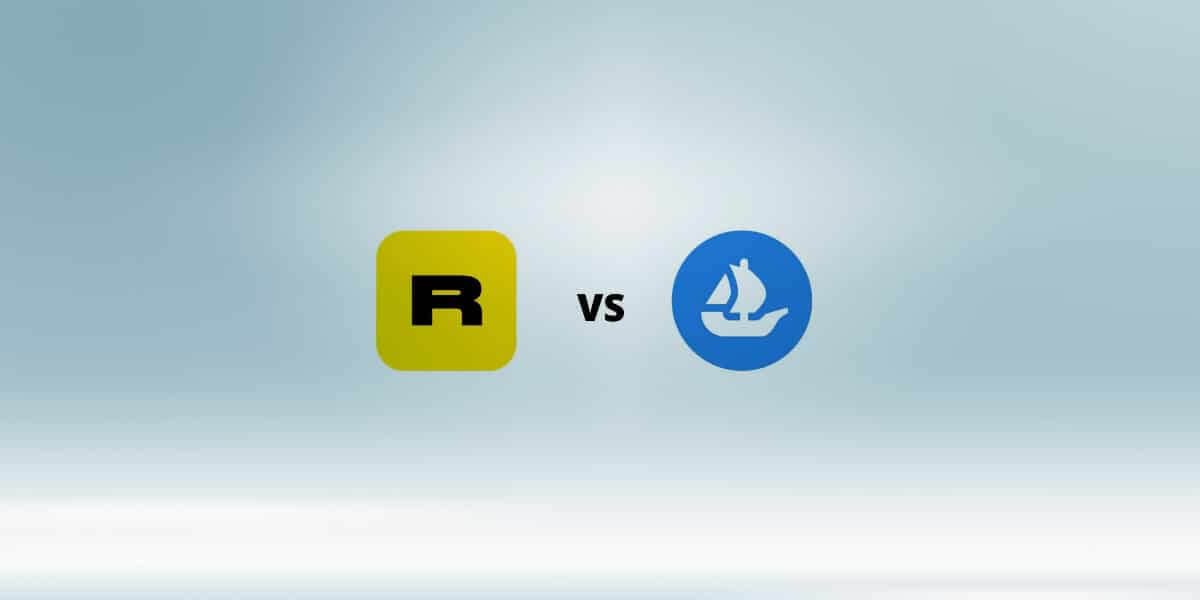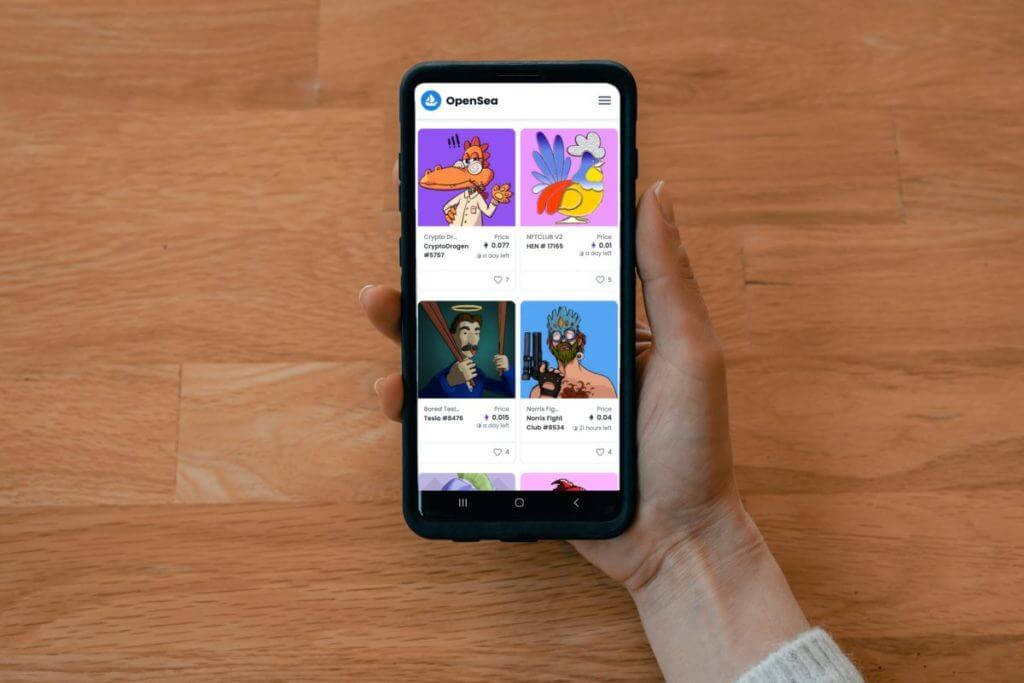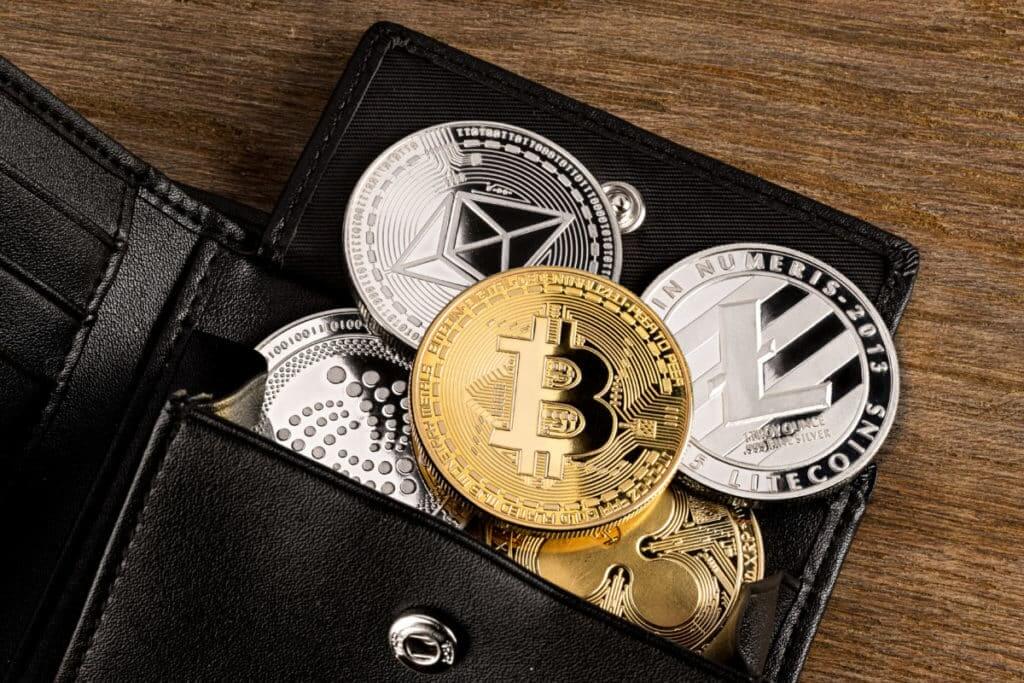
OpenSea vs. Rarible – Side-by-Side NFT Marketplace Comparison
OpenSea vs Rarible, which is the better marketplace for buying and selling NFTs.
If you are considering creating or investing in NFTs these days, you might have heard about Rarible and OpeanSea marketplaces.
These two are among the biggest and most known NFT platforms. They have many similarities, but also, there are some differences we are going to point out in this Rarible vs OpeanSea NFT marketplace comparison.
When choosing the best platform for NFT trading, one must consider the following features: security, payment options and crypto wallet support, fees, and available NFT assets. Before we tackle all these points in detail, let’s take a glance at both platforms and their general aspects.
OpenSea vs Rarible NFT marketplace comparison
OpenSea Overview
The OpenSea iNFT platform was created in 2017. At first, it was a Crypto kitties focused platform but eventually evolved into a dynamic multiple-blockchain platform offering a myriad of NFT assets.
By trading volumes and the number of users, OpenSea is the leading player in the NFT sector. It boasts more than one million registered users, and its trading volume is estimated to reach 20 billion.
Devin Finzer and Alex Atallah are the creators and founders of OpeanSea, inspired by the CrypoKitities breeds and collectibles. From its creation, the platform has risen to prominence for its uniqueness in terms of NFT offer is user-friendliness.
OpenSea, the largest NFT marketplace, is home to the most popular NFTs, such as Bored Ape Yacht Club, Crypto Punks, and more. It supports various NFT assets, from art, music, and sports assets to utility NFTs, virtual lands, and collectibles.
Rarible Overview
Rarible platform dates from 2020. It’s a decentralized, peer-to-peer marketplace. In terms of assets available, it is similar to Opensea, with the exception of collectibles and tradable cards. It has fewer registered users, and trading volumes are also lower. But the platform offers some perks that Opensea doesn’t, which we will see in detail below. Rarible also has its native token – RARI, which enables users to take part in the creation of policies and critical decisions. In general, it allows for a seamless minting and trading process for NFT pros as well as to complete beginners.
OpenSea vs Rarible: Community

OpenSea, the first NFT marketplace, has been well-established and respected by its users for years.
As an expansive database for non-fungible tokens, it facilitates the buying and selling of digital assets. Rarible is more focused on its creators, and the company is designed to give its community a say in the future of the platform.
Those who participate in transactions will receive RARI tokens, which will allow them to vote on upcoming developments.
Both platforms work with two types of smart contracts: ERC1155 and ERC721, with the latter being widely known as the best form of NFTs. ERC1155 tokens are considerably more cost-effective to create, allowing an artist to generate both non-transferable and transferrable tokens. However, tracing the ownership of these tokens is more difficult.
Rarible vs OpenSea Governance
The governance models of Rarible and OpenSea are different. OpenSea is a centralized company, meaning it operates relying on a single entity. The company Open sea has complete governance of the marketplace.
On the other hand, Rarible is a decentralized platform backed by its native RARI token. Users are in a position to take part in decision-making processes and are elevated to the shareholders roles.
Rari enables the platform’s users to vote on policies and business decisions. Decentralized platforms like Raribel are community driven and use smart contracts making it harder to manipulate data and transactions.
Rarible vs OpenSea NFTs available
Both marketplaces support a variety of NFT assets. Here’s a summary of what NFT types each platform offers: Digital art, music, collectibles, memes, sports moments, domain names, video game assets, and virtual land.
Rarible vs OpenSea Payment options
OpenSea supports more than 150 cryptocurrencies, meaning you can buy NFT using these cryptos, including ETH, SOL, DAI, USDC, AVAX, and BNB. Rraible offers the opportunity to purchase HNT using only five cryptocurrencies. These are ETH, FLOW, XTZ, or MATIC. But on the other hand, Rarible enables users to make payments using credit cards which is quite an advantage.
Rarible vs OpenSea Wallet support

Both platforms support the most popular digital wallets, such as MetMask Wallet Connect and CoinBase Wallet. In addition to these wallets, OpenSea offers Trust Wallet, Fortmatic, and Portis.
Rarible, on the other hand, has a wider range of wallets to offer, MyEtherWwallet and Binance Smart Wallet, among others. Also, Rarible offers Beacon and Temple wallets for Tezos users and Blocto for Flow users.
Finally, there is also one feature making Rarible stand out. It allows for multi-wallet accounts. Users can connect more than one crypto to their profiles/accounts to streamline the payment process.
Rarible vs OpenSea Trading Fees
Now let’s see what is the fee structure for both platforms. They offer similar fees, but there are some differences. As a user, you must pay a percentage for selling NFT. OpenSea charges 2.5 percent of the price for the NFT you sell.
Rarible charges 1 percent from both buyer and the seller. When it comes to royalty fees, OpenSea goes up to 10 percent, while Rraible offers an amazing up to 50 percent of royalties. Royalties represent additional passive income for NFT creators. It is a passive income generated on secondary markets meaning each time their NFT is traded. They get a royalty fee.
Rarible vs OpenSea Gasless Minting
Gasless minting, also known as “meta transactions” or “relayer services,” is a concept that aims to simplify the process of creating and minting NFTs on a blockchain platform. Every transaction requires a certain amount of computational resources and network fees, known as gas. When minting an NFT, the creator typically needs to pay the gas fees associated with the transaction, which can fluctuate depending on the network congestion and computational requirements.
Gasless minting introduces the idea of offloading the minting fees from the creator to a third-party service, often referred to as a “relayer” or “meta transaction service.”
Gasless minting allows digital creators to use the platform without paying gas fees. Both platforms enable their users to do gasless minting. The responsibility for paying this fee passes onto the NFT buyers.
Rarible vs OpenSea Security

Security is of paramount importance for NFT platforms for several key reasons: asset protection, ownership verification, reputation, and smart contracts audits.
Given the digital and decentralized nature of NFTs, robust security measures are necessary to protect users’ assets, verify ownership, prevent unauthorized access, and maintain the integrity of the platform.
NFT platforms must prioritize security to ensure a safe and trustworthy environment for creators, collectors, and participants in the marketplace.
However, frauds and hacks are common issues when it comes to all kinds of trading platforms. Both platforms, Rarible and OpenSea, had to handle some security issues in recent years.
In fact, as the biggest marketplace, OpenSea has experienced several hacking attacks. The most recent and most vulnerable date is from 2022 when $1.7 million were stolen during a phishing attack on their platforms.
Rarible also had some incidents but not to the same extent. In 2022 a security flaw was discovered. Meanwhile, many clients had their assets stolen without even knowing about it.
Rarible vs OpenSea Ease of Use
You don’t have to be an experienced creator or trader to benefit from its many features.
Both platforms checklist all the necessary factors impacting user-friendly experience, including:
Intuitive Interface, Smooth Onboarding Process, Clear and Transparent Information, Secure and Simple Wallet Integration.
Overall, OpenSea and Rarible prioritize simplicity, ease of use, security, and accessibility. Finally, it all comes down to your personal preferences and habits.
Rarible vs OpenSea Supported Blockchains

The structure of every marketplace is tailored to a specific blockchain. You can only interact with NFT projects that are native to the blockchain supported on the platform. Many marketplaces, including Rarible and OpenSea, are incorporating multiple blockchain solutions.
Rarible currently supports Ethereum blockchain, Tezos, Flow, Polygon, and Immutable X blockchains.
OpenSea offers investors and creators the following blockchains: Ethereum, Solana, Polygon, Avalanche, BNB, Klaytn, Arbitrum, and Optimism.
OpenSea vs Rarible – Conclusion
The platform of OpenSea is very user-friendly, supporting more than 150 cryptos. Also, it supports eight blockchains. OpenSea is the online space where you will find the most diverse NFT projects collection. Lazy minting is available, and you can also download the app on your mobile device.
Rarible is a multi-chain platform with support for five blockchains. Rarible allows payment via credit card. The platform has an established decentralized governance system powered by its native token ($RARI). A flexible royalty fee for creators with a maximum of up to 50%.
When choosing the “better” marketplace, personal preference is key. For example, Rarible might be favored by digital creators due to its higher royalty fee, while OpenSea’s larger marketplace can facilitate faster NFT sales.
Ultimately, the decision depends on individual priorities such as functionality, payment options, trading fees, and supported blockchains, as both platforms offer comparable services. Regardless, it’s evident that both platforms are contributing to the widespread acceptance of NFTs and digital collectibles.
OpeanSea vs Rarible FAQ

Should I use Rarible or OpenSea?
OpenSea charges 2.5 percent of the price for the NFT you sell. Rarible charges 1 percent from both buyer and the seller. Regarding royalty fees, OpenSea goes up to 10 percent, while Rraible offers an amazing up to 50 percent of royalties.
Can I mint on OpenSea and sell on Rarible?
OpenSea and Rarible allow you to buy, sell, or trade digital collectibles (NFTs).1
What are the disadvantages of OpenSea?
The only disadvantage of OpenSea is that they only allow royalties of up to 10% for artists.




